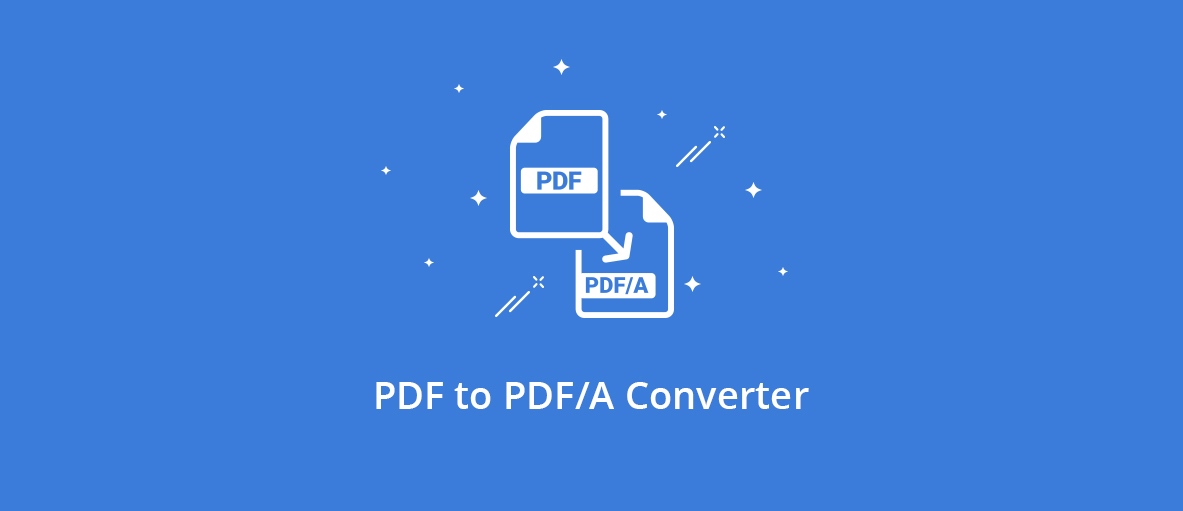PDF to PDF/A Converter
We’re happy to introduce our new PDF/A Converter, available in our SDK with GdPicture.NET version 14.1.22. Today we’re going to explain more how it works and why it’s a feature that will become a requirement (if not already) for most organizations.
Why do you need a PDF/A converter?
PDF/A is the ISO standard for long-term archiving of electronic documents.
It provides optimal security of the information and signatures contained in the document, as well as all the necessary information required to open, read, and access the necessary data of the document in the future.
PDFs converted to PDF/A are fully searchable and keep a reasonable size thanks to the many compression techniques supported.
Legislation and regulations worldwide evolve and require data to be protected and recorded digitally for a few years up to… forever in certain cases. That is why many public and governmental organizations like the Library of Congress now recognize, recommend, and favor PDF/A for archiving electronic documents.
You will find more information about the format on the PDF Association website here.
How does it work?
So back to our PDF to PDF/A converter.
Our native PDF to PDF/A converter parses the source document and compares the document structure to the expected conformance level.
The document can be modified to conform to the specification only by adding, editing, or removing required document structure elements, embedding fonts if possible and using other techniques. If such a conversion by direct modification is not possible, the PDF to PDF/A conversion engine falls back to secondary conversion options, which are Vectorization and Rasterization.
Both these options perform rendering of the document content into a completely new document. Vectorization produces vector based graphic elements where applicable, for example, fonts and paths, and combines them with image resources while Rasterization renders the document content using the raster (pixel-based) approach.
The important note here is that both Vectorization and Rasterization approaches result in loss of fonts and text information because the text converts into shapes and raster images. Text information can be later recovered using OCR features.
Here is the basic workflow you need to follow. You can choose the PDF conformance level you require and the approach you favor.
http://guides.gdpicture.com/content/webframe.html#PDFA%20Conversion.html
//We assume that GdPicture has been correctly installed and unlocked. using (GdPicturePDF gdpicturePDF = new GdPicturePDF()) { //Loading a PDF document to convert. GdPictureStatus status = gdpicturePDF.LoadFromFile("test.pdf", false); if (status == GdPictureStatus.OK) { //Providing the conversion to PDF/A-1b conformed document. status = gdpicturePDF.ConvertToPDFA("converted.pdf", PdfConversionConformance.PDF_A_1b, true, true); if (status == GdPictureStatus.OK) { MessageBox.Show("The PDF file has been converted successfully.", "Conversion to PDF/A Example", MessageBoxButtons.OK, MessageBoxIcon.Information); //Checking the conformance of the converted document. using (GdPicturePDF convertedPDF = new GdPicturePDF()) { status = convertedPDF.LoadFromFile("converted.pdf", false); if (status == GdPictureStatus.OK) { PdfConformance conf = convertedPDF.GetPDFAConformance(); MessageBox.Show("The conformance of newly created PDF is: " + conf.ToString(), "Conversion to PDF/A Example", MessageBoxButtons.OK, MessageBoxIcon.Information); } convertedPDF.CloseDocument(); //You can validate the resulting document using available PDF/A validators. } } else MessageBox.Show("The file can't be converted. Status: " + status.ToString(), "Conversion to PDF/A Example", MessageBoxButtons.OK, MessageBoxIcon.Error); gdpicturePDF.CloseDocument(); } else MessageBox.Show("The file can't be loaded. Status: " + status.ToString(), "Conversion to PDF/A Example", MessageBoxButtons.OK, MessageBoxIcon.Error); }
Where can you find and try our PDF/A Converter?
Of course, you will find the PDF to PDF/A converter engine in our SDK GdPicture.NET and its web extension DocuVieware, but we have also made it available as an online application in our next project called PassportPDF.
PassportPDF is an ecosystem where anyone, general public and developers, will test, use, and integrate a wide variety of microservices and APIs.
To test our PDF/A converter in real time, go to avepdf.com: it’s the place where you can check the state of our document imaging offer. Based on PassportPDF, it is continuously (weekly) improved with new and updated features, and it’s free, so don’t hesitate to try!
Try instantly with your document
What’s next?
Even if all the PDF/A files generated by our converter successfully pass any PDF/A validator test, the logical next step is to provide our own validation engine, so users can manage the full PDF process chain.
The PDF/A validator is going to be released in about three months, so stay tuned!
Cheers,

As CEO, Jonathan defines the company’s vision and strategic goals, bolsters the team culture, and steers product direction. When he’s not working, he enjoys being a dad, photography, and soccer.
Tags:

